Holes’ Essentials of Human Anatomy and Physiology is a trusted resource for allied health students, offering clear explanations and clinical applications․ It features interactive tools like Anatomy & Physiology Revealed, supporting hands-on learning․
Overview of the Textbook
Holes’ Essentials of Human Anatomy and Physiology is a comprehensive textbook designed for students in allied health fields, assuming no prior science knowledge․ It simplifies complex concepts through clinical applications, making them relatable and engaging․ The book is structured for one-semester courses, covering core topics like body systems, skeletal, muscular, and nervous systems․ Interactive tools such as Anatomy & Physiology Revealed enhance learning with 3D models and virtual dissections․ With editions like the 13th and 15th, it remains a trusted resource for nursing, dental, and premedical students, blending theory with practical insights for real-world healthcare scenarios․
Importance of Anatomy and Physiology in Allied Health Fields
Anatomy and physiology form the foundation for allied health professions, enabling healthcare providers to understand the human body’s structure and function․ This knowledge is crucial for diagnosing and treating conditions, as well as for developing effective treatment plans․ Allied health fields like nursing, physical therapy, and dental hygiene rely heavily on these concepts to ensure patient care is safe and evidence-based․ Holes’ Essentials of Human Anatomy and Physiology bridges theory with practical applications, preparing students to address real-world clinical challenges effectively․
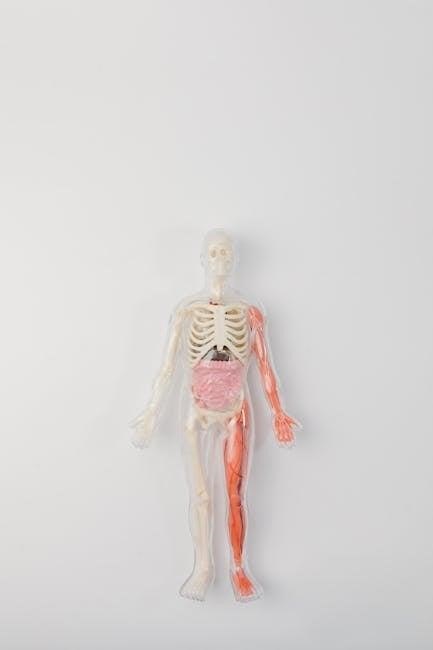
Body Cavities and Their Significance
Body cavities, such as the thoracic and abdominal cavities, house vital organs, protecting them and enabling essential bodily functions to occur efficiently․
Types of Body Cavities
The human body contains several major cavities, including the thoracic, abdominal, pelvic, cranial, and spinal cavities․ The thoracic cavity houses the heart, lungs, and trachea, while the abdominal cavity contains organs like the liver, stomach, and intestines․ The pelvic cavity holds the reproductive organs and lower digestive structures․ The cranial cavity protects the brain, and the spinal cavity encases the spinal cord․ These cavities provide structural support, protect vital organs, and facilitate movement and bodily functions․ Understanding their locations and roles is essential for diagnosing and treating various medical conditions․
Functions and Clinical Relevance of Body Cavities
Body cavities serve as protective compartments for vital organs, enabling optimal physiological function․ The thoracic cavity safeguards the heart and lungs, while the abdominal cavity supports digestion and filtration processes․ These spaces also facilitate movement, such as diaphragmatic contractions during breathing․ Clinically, understanding body cavities aids in diagnosing conditions like hernias or organ displacement․ Imaging techniques often target these areas to identify abnormalities․ Comprehending their structure and function is crucial for effective patient care and surgical interventions, emphasizing their importance in both health and disease states․

The Skeletal System
The skeletal system provides structural support, protects internal organs, and facilitates movement․ It consists of bones and joints, with bones classified as long, short, flat, or irregular․
Bone Classification and Structure
Bones are classified into long, short, flat, and irregular types based on their shapes and functions․ Long bones, like the femur, support body weight and enable movement․ Short bones, such as those in the wrist, provide stability․ Flat bones, including the skull and ribs, protect internal organs․ Irregular bones, like vertebrae, have unique shapes for specific roles․ Bone structure includes compact and spongy tissue, with osteocytes embedded in a matrix of collagen and minerals․ This composition ensures strength and flexibility, adapting to stresses while maintaining overall skeletal integrity and facilitating bodily functions․
Functions of the Skeletal System
The skeletal system performs vital functions, including support, protection, and movement․ It acts as a framework for muscles to attach, enabling locomotion․ Bones protect internal organs, such as the heart and brain․ The skeletal system also produces blood cells in the bone marrow and stores minerals like calcium and phosphorus․ Additionally, it plays a role in hormone regulation, with bones responding to hormones like calcitonin and parathyroid hormone to maintain mineral balance․ This dynamic system adapts to stresses, ensuring overall bodily functions are maintained efficiently, making it indispensable for survival and daily activities․
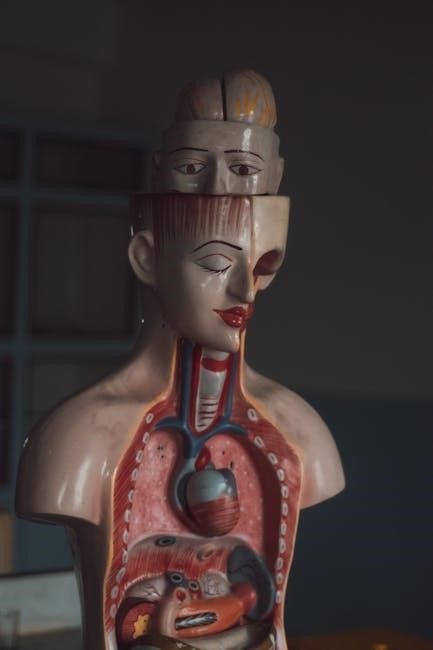
The Muscular System
The muscular system comprises skeletal, smooth, and cardiac muscles, enabling movement, maintaining posture, and regulating internal functions․ It works with the nervous system to facilitate voluntary and involuntary actions․
Types of Muscles and Their Functions
The muscular system consists of three types of muscles: skeletal, smooth, and cardiac․ Skeletal muscles are voluntary, attached to bones, and enable movement․ Smooth muscles are involuntary, found in internal organs, and regulate functions like digestion․ Cardiac muscle is specialized for the heart, ensuring rhythmic contractions․ Each muscle type has unique structures and roles, working together with the nervous system to maintain bodily functions․ Understanding their functions is crucial for allied health professionals to diagnose and treat disorders related to muscle physiology and movement․
Muscle Physiology and Movement
Muscle physiology involves the contraction and relaxation of muscle fibers, enabling movement and maintaining posture․ Skeletal muscles work with bones and joints to produce voluntary movements, while smooth muscles regulate involuntary actions like digestion․ Cardiac muscles sustain rhythmic heart contractions․ Muscle contraction occurs due to the sliding filament mechanism, where actin and myosin filaments interact․ Motor neurons transmit signals from the nervous system, initiating contractions․ This process is essential for locomotion, maintaining body position, and supporting internal functions․ Understanding muscle physiology helps in diagnosing disorders like muscular dystrophy and improving rehabilitation strategies for allied health professionals․ Movement is vital for overall bodily function and health․
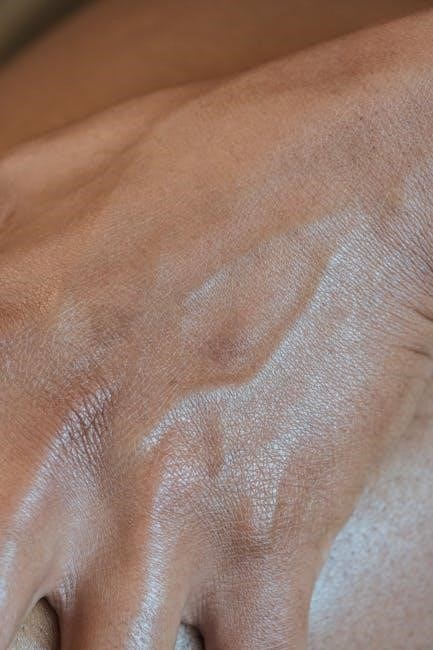
The Nervous System
The nervous system is a complex network controlling bodily functions, enabling thought, movement, and sensory perception․ It consists of the central and peripheral nervous systems, ensuring communication and coordination throughout the body․
Structure and Function of the Central Nervous System
The central nervous system (CNS) consists of the brain and spinal cord, protected by the meninges and cerebrospinal fluid․ The brain processes sensory information, controls movement, and manages higher cognitive functions like memory and emotion․ The spinal cord acts as a relay center, transmitting signals between the brain and the body․ Together, they integrate and coordinate bodily functions, enabling complex responses to internal and external stimuli․ Damage to the CNS can lead to severe impairments, highlighting its critical role in maintaining overall physiological harmony and adaptive responses․ Its intricate structure and function are essential for survival and quality of life․
Peripheral Nervous System and Its Roles
The peripheral nervous system (PNS) connects the central nervous system (CNS) to the body’s sensory organs and effector organs․ It consists of nerves and ganglia, transmitting sensory information to the CNS and motor signals from the CNS to muscles and glands․ The PNS is divided into the somatic nervous system, controlling voluntary actions, and the autonomic nervous system, regulating involuntary functions like heart rate and digestion․ It enables rapid responses to stimuli, maintains homeostasis, and facilitates communication between the CNS and the body’s extremities․ Damage to the PNS can result in sensory deficits, motor weakness, or autonomic dysfunction, impacting overall bodily functions․

The Circulatory System
The circulatory system, comprising the heart, blood vessels, and blood, transports oxygen, nutrients, and hormones throughout the body, maintaining cellular health and overall physiological balance․
Components of the Circulatory System
The circulatory system consists of the heart, blood vessels, and blood․ The heart acts as a pump, propelling blood through arteries, veins, and capillaries․ Arteries carry oxygen-rich blood away from the heart, while veins return oxygen-depleted blood․ Capillaries facilitate gas and nutrient exchange at the cellular level․ Blood, composed of plasma, red blood cells, white blood cells, and platelets, transports oxygen, nutrients, and hormones․ The lymphatic system, an auxiliary component, supports fluid return and immune function․ Together, these elements maintain tissue oxygenation, nutrient delivery, and overall physiological balance, ensuring proper bodily functions and health․
Blood Composition and Its Functions
Blood is a vital fluid composed of plasma, red blood cells (RBCs), white blood cells (WBCs), and platelets․ Plasma, the liquid portion, transports nutrients, hormones, and waste products․ RBCs contain hemoglobin, essential for oxygen transport․ WBCs play a key role in immune defense․ Platelets are crucial for blood clotting, preventing excessive bleeding․ Collectively, blood maintains oxygen delivery, supports immune responses, regulates pH, and transports essential nutrients․ Its functions are integral to overall health, ensuring proper cellular function and systemic balance in the human body․
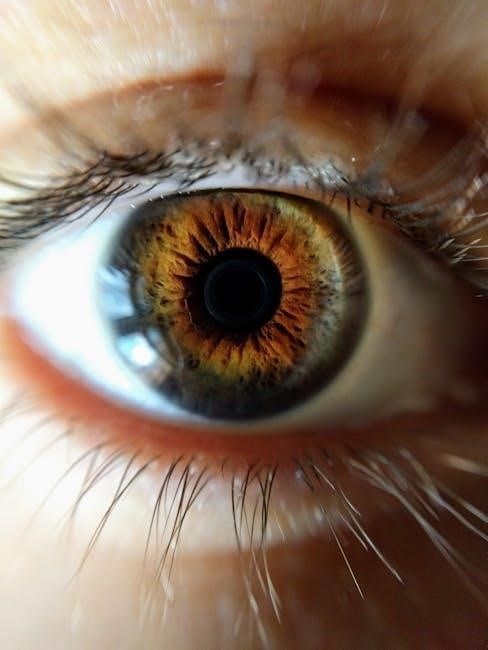
The Respiratory System
The respiratory system facilitates gas exchange, enabling oxygen intake and carbon dioxide expulsion, crucial for cellular respiration and energy production in the human body․
Structure of the Respiratory Tract
The respiratory tract consists of the upper and lower airways, beginning with the nasal cavity and mouth, which warm and filter inhaled air․ The pharynx, or throat, connects to the larynx, housing the vocal cords․ The trachea, or windpipe, extends into the chest, dividing into bronchi that enter each lung․ Bronchioles branch further, leading to alveoli, tiny sacs where gas exchange occurs․ This intricate pathway ensures efficient oxygen delivery and carbon dioxide removal, maintaining proper respiration and overall health․
Mechanisms of Breathing and Gas Exchange
Breathing involves inhalation and exhalation, driven by diaphragm and intercostal muscle contractions․ Inhalation expands the thoracic cavity, lowering air pressure and drawing air into the lungs; Exhalation reverses this process, expelling air․ Gas exchange occurs in alveoli, where oxygen diffuses into blood and carbon dioxide diffuses out․ This process is essential for delivering oxygen to tissues and removing waste, maintaining cellular respiration and overall bodily functions․ Efficient mechanisms ensure proper ventilation and oxygenation, crucial for health and survival․

The Digestive System
The digestive system breaks down food into nutrients for absorption and utilization by the body․ It includes the mouth, esophagus, stomach, small intestine, and large intestine, working together to process and eliminate waste․
Overview of the Digestive Process
The digestive process begins with ingestion, where food enters the mouth and undergoes mechanical digestion through chewing and mixing with saliva․ Swallowing propels food into the esophagus, which transports it to the stomach․ In the stomach, food is broken down by gastric juices containing enzymes and acids․ The partially digested mixture then moves to the small intestine, where most nutrient absorption occurs․ The remaining waste enters the large intestine for water absorption and elimination․ This sequential process ensures proper nutrient extraction and waste removal, maintaining overall bodily function and health․ Each step is vital for energy production and cellular maintenance․
Key Organs and Their Functions
The digestive system comprises essential organs that work together to break down and process food․ The mouth initiates digestion with teeth and saliva․ The esophagus transports food to the stomach, where gastric juices further break it down․ The small intestine absorbs nutrients into the bloodstream, while the large intestine absorbs water and prepares waste for elimination․ Other vital organs include the liver, pancreas, and gallbladder, which produce enzymes and bile to aid digestion․ Each organ plays a unique role in maintaining nutritional balance and overall health, ensuring proper absorption and utilization of nutrients by the body․
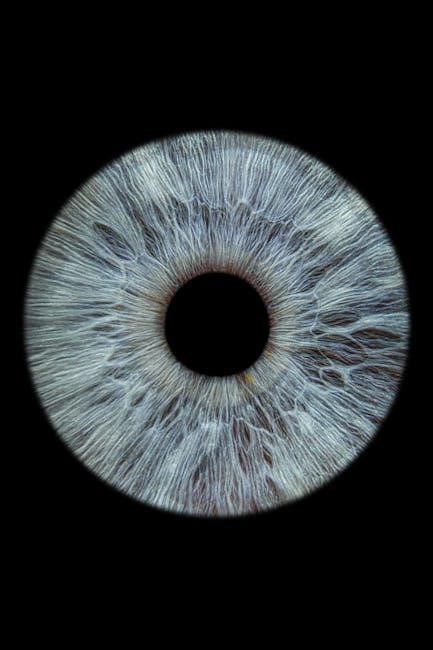
The Endocrine System
The endocrine system regulates body functions through hormones, produced by glands like the pancreas, thyroid, and adrenal glands, controlling metabolism, growth, and electrolyte balance․
Major Endocrine Glands and Hormones
The endocrine system comprises glands that produce hormones regulating various bodily functions․ The pituitary gland controls other endocrine glands, releasing hormones like growth hormone and ACTH․ The thyroid gland produces thyroxine, regulating metabolism․ Adrenal glands secrete adrenaline for the ‘fight or flight’ response and cortisol for stress management․ The pancreas produces insulin and glucagon, essential for glucose regulation․ In females, ovaries produce estrogen and progesterone for reproductive functions, while testes in males produce testosterone․ These glands and hormones are vital for maintaining homeostasis, as imbalances can lead to disorders like diabetes or hormonal deficiencies․ The textbook explains their roles with clinical relevance, aiding allied health students in understanding real-world applications․
Regulation of Body Functions by Hormones
Hormones regulate various bodily functions through precise signaling pathways․ Insulin and glucagon manage blood sugar levels, while thyroid hormones control metabolism․ Growth hormone influences development, and adrenaline responds to stress․ Hormones like estrogen and testosterone regulate reproductive processes․ The endocrine system uses feedback loops to maintain balance, ensuring homeostasis․ Disorders such as diabetes or thyroid dysfunction highlight the importance of hormonal regulation․ Holes’ Essentials explains these mechanisms with clinical examples, helping students understand how hormonal imbalances impact health and treatment options in allied health fields․

Clinical Applications and Case Studies
Holes’ Essentials connects anatomy and physiology to real-world medical scenarios, using case studies to illustrate physiological processes and enhance understanding of clinical relevance in healthcare․
Common Disorders Related to Anatomy and Physiology
Common disorders include osteoporosis, affecting bone density, and diabetes, linked to pancreatic dysfunction․ Respiratory issues like asthma and chronic obstructive pulmonary disease (COPD) impact lung function․ These conditions highlight the importance of understanding anatomical structures and physiological processes in diagnosing and managing health problems․ Holes’ Essentials provides detailed explanations of these disorders, connecting them to underlying biological mechanisms․ This knowledge is crucial for healthcare professionals, enabling them to develop effective treatment plans and improve patient outcomes․
Case Studies Illustrating Physiological Processes
Case studies in Holes’ Essentials provide real-world examples, such as a patient with a bone fracture or diabetes, to illustrate physiological processes․ These scenarios demonstrate how anatomical structures function under normal and pathological conditions․ For instance, a case involving a heart condition explains blood flow dynamics and the impact of plaque buildup․ Interactive tools like 3D models and animations enhance understanding․ These practical applications help students connect theoretical knowledge to clinical practice, preparing them for real-world healthcare challenges․ The textbook’s focus on relatable examples makes complex physiological concepts more accessible and engaging for learners in allied health fields․